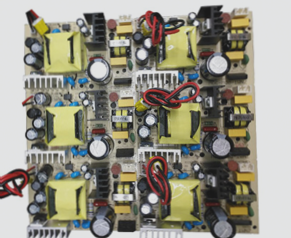**General principles of multilayer printed circuit boards layout and wiring.** The general principles that designers need to follow in the circuit board layout process are as follows: (1) The principle of setting the spacing of component printed traces. The spacing constraint between different networks is determined by the principles of electrical insulation, manufacturing processes, and the dimensions of component printed traces. For instance, if the pin spacing of a chip component is 8 mil, then the [Clearance Constraint] for that chip cannot be set to 10 mil; instead, the designer should establish a design rule of 6 mil for the chip. Additionally, the spacing settings should consider the production capabilities of the manufacturer. Furthermore, a crucial factor affecting components is electrical insulation. If the potential difference between two components or networks is substantial, electrical insulation issues must be addressed. The clearance safety voltage in a typical environment is 200 V/mm, which equates to 5.08 V/mil. Consequently, when both high-voltage and low-voltage circuits coexist on the same circuit board, it is imperative to ensure adequate safety distances.
—
Let me know if you need further adjustments!





